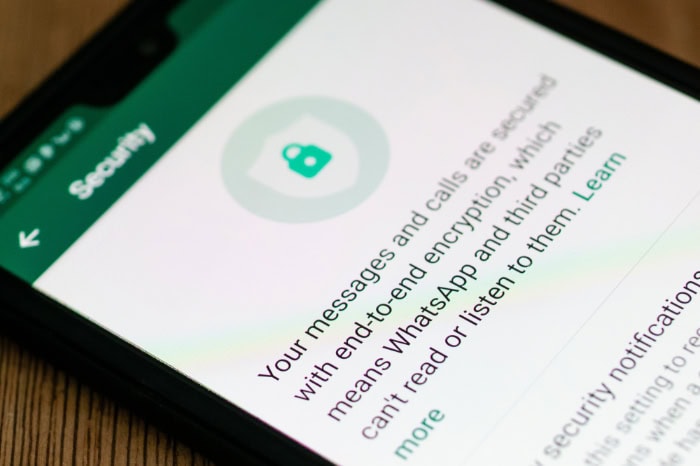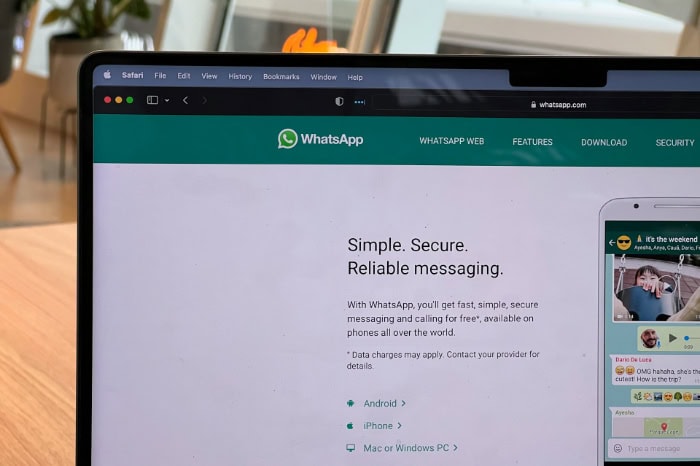What Is End-to-End Encryption? How It Protects Your Privacy

In a world where almost every interaction and transaction leaves a digital trail, protecting sensitive information has become a top priority. End-to-end encryption (E2EE) stands out as a powerful tool designed to keep personal conversations, financial data, and confidential files safe from unauthorized access.
By ensuring that only the sender and intended recipient can access the content of a message, E2EE has become a crucial technology for safeguarding privacy.
From securing everyday messaging apps to protecting sensitive data in healthcare and finance, E2EE has found applications in a wide range of fields. Yet, its implementation raises important questions about how it works, its strengths, and its challenges.
Understanding End-to-End Encryption
In an era where communication and data transfer happen at the click of a button, securing sensitive information has become essential. End-to-end encryption (E2EE) is a method designed to protect data by ensuring that only the sender and the intended recipient can access its content.
This approach offers unparalleled privacy by encrypting data at its source and keeping it encrypted until it reaches its destination.
What sets E2EE apart from other encryption methods is its ability to eliminate third-party access. For example, traditional transport-layer encryption protects data during transmission but decrypts it as soon as it reaches the server.
This means that service providers, and potentially attackers, can access the unencrypted data. In contrast, E2EE ensures that no one—not even the service provider—can view the content, as the decryption keys are exclusively held by the sender and recipient.
By removing the possibility of intermediary access, E2EE has become the gold standard for privacy in communication. It has been widely adopted across messaging apps, cloud storage platforms, and industries that handle confidential information.
While the concept may sound complex, its core principle is simple: encrypt data so securely that only the intended recipient can unlock it.
How End-to-End Encryption Works

At the heart of E2EE is asymmetric cryptography, a method that uses two mathematically related keys: a public key and a private key.
These keys work in tandem to encrypt and decrypt data, ensuring that the process is secure and accessible only to the intended recipient.
When a sender wishes to transmit a message, their device obtains the recipient’s public key, which is openly shared and accessible. Using this public key, the message is encrypted into an unreadable format.
This scrambled version of the message, known as ciphertext, is sent through the network to the recipient. Even if the ciphertext is intercepted during transmission, it remains indecipherable without the corresponding private key.
Upon receiving the ciphertext, the recipient’s device uses their private key to decrypt the message. Unlike the public key, the private key is kept confidential and stored securely on the recipient’s device.
This private key allows the recipient to unlock the encrypted message, restoring it to its original form and making it readable.
The encryption and decryption processes happen seamlessly in the background, requiring no manual effort from the users.
This method ensures that only the person in possession of the private key can decrypt the data, making the communication secure even if the network or server facilitating the exchange is compromised.
Key Management
The security of E2EE systems heavily depends on how encryption keys are generated, shared, and stored. Key management is a critical aspect of the process, as these keys form the foundation of the encryption system.
Public and private keys are generated using cryptographic algorithms that produce mathematically paired values.
The public key can be freely distributed without compromising security, while the private key must remain confidential to preserve the integrity of the encryption.
These keys are typically generated on the user’s device to ensure that no third party has access to the private key.
To facilitate secure communication, the public key is shared with the sender, often through a secure distribution channel or by embedding it in a digital certificate.
The private key, on the other hand, is stored securely on the recipient’s device, often protected by encryption or other security measures to prevent unauthorized access.
Additionally, some systems use ephemeral keys, which are temporary keys generated for a single session or message. This approach adds another layer of security, as even if an ephemeral key is compromised, it cannot be used to decrypt past or future messages.
Proper key management ensures that the encryption process remains secure at all times, protecting sensitive data from unauthorized access or manipulation.
Role of Algorithms
The reliability of E2EE is anchored in the strength of the cryptographic algorithms it employs. These algorithms are designed to ensure that encrypted data cannot be decrypted without the appropriate key, even if an attacker has access to the ciphertext.
One of the most commonly used algorithms is RSA, which relies on the mathematical properties of large prime numbers to generate secure key pairs. RSA has been a cornerstone of encryption for decades and remains a widely trusted method for securing data.
Another increasingly popular option is Elliptic Curve Cryptography (ECC). ECC offers similar levels of security to RSA but with smaller key sizes, making it more efficient in terms of computational resources and network bandwidth.
This efficiency makes ECC particularly well-suited for modern applications, such as mobile devices and IoT systems, where performance and power consumption are critical considerations.
Other algorithms, such as Diffie-Hellman for key exchange and AES (Advanced Encryption Standard) for symmetric encryption within hybrid systems, also play important roles in E2EE implementations.
These algorithms work together to create a secure environment where data remains protected throughout its transmission.
Benefits of End-to-End Encryption

End-to-end encryption offers significant advantages in securing digital communication and safeguarding sensitive data. Its ability to create private communication channels ensures that users can share information without fear of unauthorized access.
Enhanced Security
One of the most notable strengths of E2EE is its ability to guard against advanced security threats, such as man-in-the-middle (MitM) attacks. In a MitM attack, a malicious actor intercepts communication between two parties in an attempt to eavesdrop or alter the exchanged data.
Without E2EE, such attacks can succeed if the attacker gains access to unencrypted or partially encrypted data flowing through the network.
E2EE eliminates this vulnerability by encrypting data from the moment it leaves the sender’s device until it arrives at the recipient’s device.
Even if an attacker intercepts the data during transmission, it appears as an unintelligible string of characters—impossible to decipher without the private key.
This ensures that the content of the communication remains protected, regardless of the security of the transmission medium.
Additionally, E2EE prevents unauthorized access by ensuring that no intermediary, including the service provider facilitating the communication, can access the encrypted content.
This is particularly valuable in cases where servers or networks may be compromised, as encrypted data remains secure even if the infrastructure is breached.
Privacy Protection
Another critical advantage of E2EE is its ability to ensure privacy for all parties involved in a communication.
By encrypting data directly on the sender’s device and decrypting it only on the recipient’s device, E2EE ensures that no third party can access the content of the communication.
This includes the service provider hosting the communication platform, which is often unable to decrypt the data even if requested to do so.
This level of privacy is especially crucial for sensitive communications, such as personal conversations, financial transactions, or business negotiations.
E2EE ensures that only the intended recipient has the ability to access the information, providing users with the confidence that their data will not be exposed to unauthorized individuals or entities.
Furthermore, the inability of service providers to access encrypted content helps address concerns about mass surveillance or improper data usage.
Trust and Compliance
E2EE is not only vital for securing communication but also plays an important role in helping organizations meet regulatory expectations for data protection.
Regulations such as the General Data Protection Regulation (GDPR) in Europe and the Health Insurance Portability and Accountability Act (HIPAA) in the United States emphasize the importance of protecting sensitive information, and encryption is a highly recommended safeguard under both frameworks.
For GDPR, encryption is recommended as part of “appropriate technical and organizational measures” to ensure data security.
While E2EE is not explicitly required, its ability to render data unreadable to unauthorized parties aligns with GDPR’s principles of confidentiality and integrity.
Additionally, in the event of a breach, encrypted data may mitigate liability since it would be unintelligible to attackers.
Under HIPAA, encryption is classified as an “addressable” safeguard for protecting electronic protected health information (ePHI). Organizations must evaluate whether encryption, such as E2EE, is a reasonable and appropriate measure for their operations.
Though not mandatory, E2EE is widely regarded as one of the most effective methods for ensuring secure data transmission and mitigating risks like unauthorized access or accidental disclosure.
Beyond regulatory compliance, E2EE helps build trust with users by demonstrating a commitment to safeguarding their data.
Challenges and Risks

While end-to-end encryption delivers strong security and privacy protections, it also presents a range of challenges that require careful consideration.
Despite its ability to safeguard data content from unauthorized access, implementing E2EE on a large scale introduces technical, ethical, and operational complexities.
Metadata Exposure
Although E2EE ensures that the content of a message remains encrypted and inaccessible to unauthorized parties, it does not protect metadata. Metadata refers to the information surrounding the communication, such as the sender’s and recipient’s identities, timestamps, geolocation data, and the size of the message.
This data is often necessary for routing messages through the network and ensuring proper delivery.
The accessibility of metadata can pose significant privacy concerns. For instance, even without access to the actual content, analyzing metadata can reveal patterns about a person’s behavior, communication habits, or relationships.
This information can be exploited for purposes like targeted advertising, surveillance, or profiling.
Metadata exposure also has implications for anonymity. While the encrypted content of messages remains safe, the mere knowledge of who is communicating with whom can be enough to compromise privacy in certain situations.
Addressing this limitation requires additional measures, such as anonymization techniques or metadata encryption, though these solutions are not always feasible or widely implemented.
Misuse Concerns
Another challenge associated with E2EE is its potential misuse. By design, E2EE ensures that no third party, including service providers or law enforcement, can access the content of encrypted communications.
While this is a significant advantage for privacy and security, it also raises concerns about how the technology might be exploited.
E2EE can be used by individuals engaging in illegal activities to communicate without fear of interception. This has led to debates about the balance between privacy rights and public safety.
Law enforcement agencies often argue that E2EE creates “blind spots” where criminal activities, such as organized crime or terrorism, can occur undetected. The inability to access encrypted communications can hinder investigations and delay efforts to prevent harm.
On the other hand, weakening or bypassing encryption to allow law enforcement access—often referred to as building “backdoors”—introduces significant risks.
Backdoors could be exploited by malicious actors, undermining the security and privacy of all users. This tension between privacy and public safety remains a contentious issue, with no simple solution that satisfies both sides.
Implementation Challenges
Deploying E2EE involves technical complexities that can pose significant challenges for developers and organizations. One of the primary hurdles is managing encryption keys effectively.
Ensuring that users’ private keys are generated, stored, and protected securely is critical to the integrity of the system. Compromised or poorly managed keys can render the encryption useless, exposing sensitive data to unauthorized access.
Additionally, achieving compatibility with existing enterprise systems can be difficult. Many organizations rely on tools and services that require access to data for functions like indexing, analytics, or backups.
Because E2EE restricts access to encrypted content, integrating it into such environments often requires rethinking processes and workflows, which can be costly and time-consuming.
Scalability is another concern, particularly for services with millions or billions of users. Implementing E2EE at this scale requires significant computational resources, careful protocol design, and efficient handling of encryption keys.
Ensuring that the system remains fast, reliable, and user-friendly while maintaining strong encryption is a delicate balance that challenges even the most advanced platforms.
Despite these hurdles, the benefits of E2EE often outweigh its limitations.
However, addressing these challenges requires ongoing innovation and collaboration among technologists, policymakers, and organizations to ensure that the technology continues to evolve in ways that enhance security without compromising usability or ethical considerations.
Everyday Use Cases for End-to-End Encryption

End-to-end encryption has become an essential tool for securing communication and data in various fields. Its ability to ensure that only the intended parties can access information makes it an ideal choice for protecting sensitive content.
From personal messaging to enterprise services, E2EE is widely used to enhance privacy and security in everyday applications.
Messaging Platforms
One of the most common uses of E2EE is in messaging applications, where privacy is often a top concern.
Apps like Signal, WhatsApp, and iMessage have made E2EE the default for securing conversations, ensuring that messages can only be read by the sender and the recipient.
In these platforms, messages are encrypted on the sender’s device before being sent over the network. They remain encrypted during transit and are only decrypted once they reach the intended recipient’s device.
This design means that even the messaging service provider cannot access the content of the messages, offering users a high level of privacy.
For example, Signal is widely regarded for its robust implementation of E2EE, using the Signal Protocol to encrypt not just messages but also voice and video calls.
WhatsApp, which also employs the Signal Protocol, extends E2EE to group chats, ensuring secure communication even in multi-party conversations.
Similarly, Apple’s iMessage applies E2EE to protect texts, images, and videos shared between users within its ecosystem.
Cloud Storage and File Sharing
E2EE is also gaining traction in cloud storage and file-sharing services, where sensitive data is often stored remotely.
Platforms like Tresorit and Sync use E2EE to ensure that files remain encrypted from the moment they are uploaded to the cloud until they are downloaded by an authorized user.
In these services, files are encrypted locally on the user’s device before being uploaded to cloud servers. This approach prevents the service provider—or any unauthorized party—from accessing the content of the stored files.
Even if the cloud server is hacked or compromised, the data remains protected, as the encryption keys are held exclusively by the user.
Additionally, E2EE enables secure collaboration in file-sharing environments. For instance, when a user shares a file with another person, the file is encrypted with the recipient’s public key, ensuring that only the intended recipient can decrypt and access it.
This functionality is particularly valuable for businesses and individuals who need to share confidential documents or sensitive information without risking exposure.
Conclusion
End-to-end encryption has emerged as one of the most effective tools for securing communication and safeguarding sensitive information.
By encrypting data directly on the sender’s device and decrypting it only on the recipient’s, it provides unparalleled protection against unauthorized access, even from service providers or malicious actors.
Its benefits are evident across a wide range of applications, from securing personal conversations on messaging platforms to protecting critical data in cloud storage, healthcare, and finance.
While it presents challenges, such as metadata exposure and implementation complexities, its ability to enhance privacy, ensure compliance, and build trust makes it an essential feature of modern communication technologies.
As the need for secure and private communication grows, end-to-end encryption continues to play an essential role in empowering individuals and organizations to protect their most sensitive data.



